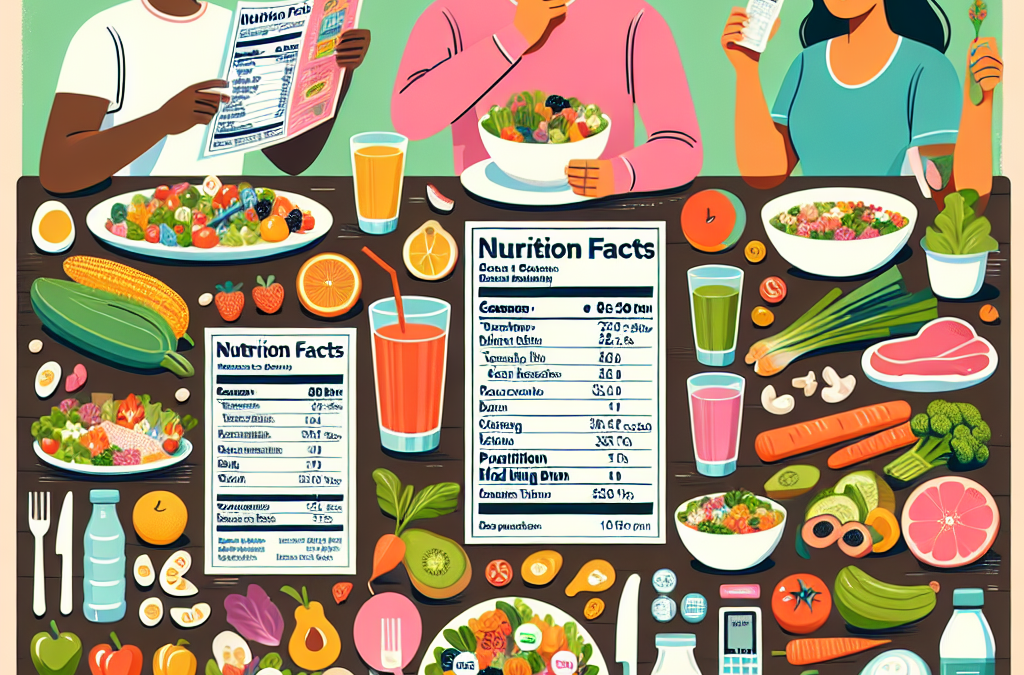How to Eat for Optimal Nutrient Density Every Day
- Maximizing Nutritional Value in Your Meals
- Balancing Macronutrients for Better Absorption
- Choosing Whole Foods Over Processed Ones
- Incorporating a Variety of Colors on Your Plate
Maximizing Nutritional Value in Your Meals
Understanding Nutrient Density
So, let me tell you, nutrient density is the key factor in how I choose my foods. It’s all about getting the most nutrients out of every calorie you consume! The idea is simple: foods that are high in vitamins, minerals, and other important nutrients but low in calories are the real winners. This doesn’t mean that every meal has to feel like you’re on a rabbit diet; it’s about making smart choices with every bite!
For example, instead of reaching for that bag of chips as a snack, I often grab some carrot sticks or cucumbers. Not only do I feel full, but I also know I’m giving my body some serious love with all that fiber and vitamins. Every day, I try to think about my food choices in terms of how nutrient-rich they are—after all, I want my body to be functioning at its best!
To dive deeper, I recommend exploring the concept of “superfoods.” You might have heard buzzwords like quinoa or kale thrown around, but there’s a reason for their hype. They pack a punch in terms of nutrients compared to other foods. So, make it a habit to sprinkle in some superfoods into your diet for that extra boost.
Cooking Methods Matter
Believe it or not, how you prepare your food can significantly affect its nutrient profile. For instance, steaming vegetables is a great way to retain vitamins that might be lost through boiling. When I learned this little nugget of info, it changed how I cooked and enjoyed my meals!
I also love to roast my veggies. It enhances the flavors without sacrificing too much of their bite. Try experimenting at home—you’ll find that simple methods like roasting can elevate the taste of nutrient-dense foods, making them more enjoyable to consume.
One more thing, avoid overcooking! I’ve been guilty of that a few times. Overcooked food loses its texture and a lot of nutrients, so keep an eye on your stovetop to make sure you’re keeping those nutrients intact.
Planning Your Meals
Meal prepping has been a game-changer for me! It’s amazing how planning can make it easier to stick to nutrient-dense eating. I usually dedicate a couple of hours on Sundays to prepare meals for the week. Having healthy meals ready to go makes it easier to say no to unhealthy grab-and-go options.
When meal prepping, I focus on including a protein, a whole grain, and plenty of colorful veggies. For instance, a grilled chicken breast, brown rice, and a medley of bell peppers and broccoli make for a satisfying meal that’s loaded with nutrients!
And let’s face it, when you’ve got tasty, wholesome meals ready to be enjoyed, you’re less likely to hit that drive-thru for a quick fix. Trust me; you’ll feel better when you choose a colorful, balanced plate instead!
Balancing Macronutrients for Better Absorption
The Role of Carbohydrates
Carbs often get a bad rap, but they’re essential for giving us energy. I make it a point to choose complex carbohydrates, like whole grains, over simple sugars. I can’t stress enough how good whole grains are for keeping you satisfied throughout the day.
Think brown rice, whole grain bread, or quinoa. These options provide fiber, which not only aids digestion but also keeps you feeling fuller for longer. In fact, I often notice that my energy levels are steadier when I incorporate these carb sources into my meals, compared to when I nibble on white rice or sugary snacks.
Also, carbs are a perfect pairing with proteins—together they help with nutrient absorption. So, every time I whip up a meal, I ensure to include a good carb source alongside my protein for maximum benefits!
The Importance of Healthy Fats
If I’m being honest, I used to avoid fats thinking they were the enemy. But boy, did I have that wrong! Healthy fats, like those from avocados, nuts, and olive oil, are super important. They help with nutrient absorption and are great for heart health!
Just imagine tossing a handful of nuts on top of your salad for that satisfying crunch while also adding good fats. I do this all the time! Or blending avocado into my smoothies for creaminess while boosting my healthy fat intake. Your kickin’ nutrients with every bite!
Also, pairing fat with your vegetables can increase the absorption of fat-soluble vitamins like A, D, E, and K. I always keep this in mind when I’m preparing meals—it’s about creating not just a meal, but a nutrient powerhouse!
Protein Sources That Pack a Punch
When it comes to proteins, variety is key! I like to mix it up—lean meats, plant-based options, and healthy fish. Each source has its unique benefits, so why not enjoy a bit of everything? For instance, chicken is great for lean protein, while beans bring fiber and are easy on the budget!
I also try to sneak in fish a couple of times a week, particularly fatty fish like salmon, which is rich in omega-3 fatty acids. I love the unique flavor they bring, and they contribute to heart health too!
Oh, and don’t forget about the power of snacks! Incorporating protein-rich snacks like Greek yogurt or edamame between meals helps with satiety and keeps my energy up throughout the day.
Choosing Whole Foods Over Processed Ones
Identifying Whole Foods
It’s simple—whole foods are as close to their natural state as possible. Fresh fruits, veggies, nuts, seeds, and whole grains belong in this category. I find that sticking to whole foods makes it easier to avoid additives and high sugar content found in processed foods.
Whenever I hit the grocery store, I make it a point to shop mainly in the produce section. Everything else tends to be processed! If I’m in the mood for snacks, I always opt for raw nuts or dried fruits instead of chips or cookies.
Get an Amazing Discount on Best Organic SuperFood Product!
Plus, whole foods are often just tastier! I remember when I made the switch—I felt more satisfied after meals, which helped keep my overall eating in check.
The Dangers of Processed Foods
Now, I know it can be tough to resist the allure of easy-to-grab processed snacks, but they come with downsides. Many of these foods are loaded with sugars, unhealthy fats, and preservatives. Not to mention, they often lack essential nutrients.
When I took a hard look at my snacks, I was shocked by how many empty calories I was consuming! Switching it up has made a world of difference. I try to stick to snacks that have recognizable ingredients—if I can’t pronounce it, I probably won’t eat it.
Don’t get me wrong, life is all about balance! So, while I enjoy a treat from time to time, I keep my focus primarily on whole foods for the majority of my meals and snacks.
How to Transition to Whole Foods
If switching to whole foods feels daunting, trust me, I’ve been there! A gradual approach works wonders. Start by incorporating one or two whole food meals a week, and then add more as you feel comfortable.
Meal planning can also help ease the transition. Planning your meals allows you to ensure you have whole food options ready, making it less likely to revert to processed foods during rushed moments.
Lastly, don’t hesitate to explore! I found that trying new whole foods and recipes keeps my meals fun and exciting. Roasted Brussels sprouts? Yes, please!
Incorporating a Variety of Colors on Your Plate
The Rainbow Plate Concept
Eating the rainbow isn’t just a catchy phrase; it’s a real strategy! Different colored fruits and veggies provide a variety of nutrients that our bodies need. I always aim for a colorful plate; it feels like a feast for the eyes as well!
For instance, incorporating greens, reds, yellows, and purples in my meals not only makes them appetizing but also ensures I’m getting a balanced range of vitamins. Plus, colorful foods are often higher in antioxidants that help fight inflammation!
When I stir-fry veggies, I make it a point to mix many colors together. It’s surprising how just a few extra veggies can amp up the flavor and nutritional value of a simple dish.
Seasonal Produce Advantage
Shopping for seasonal produce means fresher, tastier options! When fruits and veggies are in season, they are often cheaper too. I love going to farmer’s markets to see what’s fresh and in my area—it adds whimsy to grocery shopping!
Additionally, eating seasonally promotes a variety of foods in your diet. For example, during summer, I make good use of all the tomatoes and peppers! And come fall, cozy roasted root vegetables become a staple in my kitchen.
Using what’s in season can help diversify my meals, making sure I’m not getting bored with my choices, and keeps my nutrient intake balanced.
Experimenting with New Foods
Embrace your inner foodie! Don’t shy away from trying new fruits and vegetables. Whenever I come across a veggie I’ve never seen before, I snag it and look for recipes online. You never know what you might love!
For instance, I had never tried jicama until a friend gave me some. Now, it’s one of my favorite snacks—crunchy and refreshing! This little adventure has expanded my palate and made healthy eating feel less like a chore.
Plus, keeping it exciting helps adhere to a healthy lifestyle. I’ve found myself more motivated to make meals when I know I’m trying something new and fun!
Frequently Asked Questions
1. What are the best sources of nutrient-dense foods?
Some of the best sources include leafy greens, colorful vegetables, fruits, whole grains, lean proteins, nuts, and seeds. Incorporating a variety of these foods into your diet can significantly improve your nutrient intake.
2. How can I incorporate more whole foods into my diet?
Start by gradually swapping out processed foods for whole food alternatives. Meal prep can help you have healthy options ready, making it easier to choose whole foods during busy days.
3. Is it necessary to eat a variety of colors in my meals?
Yes! Different colors typically represent different nutrients. Eating a variety ensures that you’re getting a broad spectrum of vitamins and minerals essential for health.
4. Can I still enjoy treats while focusing on nutrient density?
Absolutely! It’s all about balance. Treats are okay in moderation, but focusing on nutrient-dense foods for your main meals can enhance your overall health without depriving yourself.




